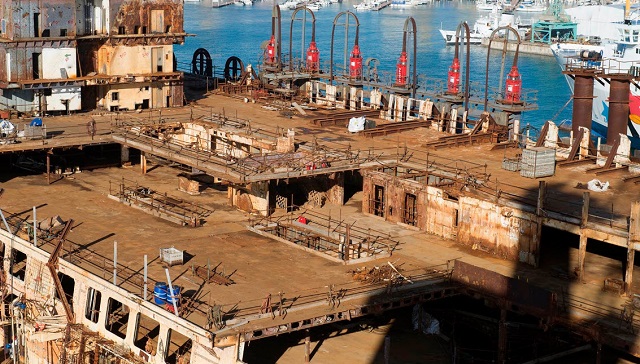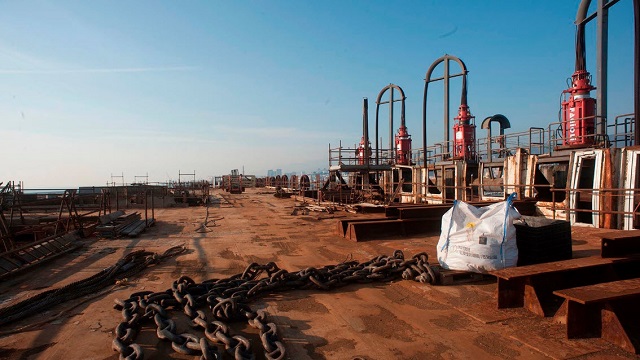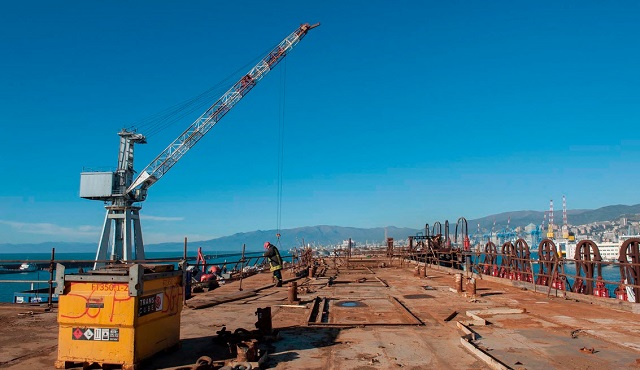Only Nine Sponsons Left on Costa Concordia Wreck
Costa Concordia dismantling and recycling operations are progressing, and about 200 technicians are working on the wreck and cutting decks – from 3 to 1 – while the decks from 14 to 4 have already been removed.
As the weight of the wreck becomes lighter, it has been possible to remove 21 sponsons so far, out of the 30 originally installed. Simultaneously operations are in progress to maintain the restored buoyancy to the hull so to allow to remove all the sponsons and then to transfer the wreck to dry dock where the final demolition will take place.
The first two sponsons were removed in December 2015. These caissons were used in the parbuckling of the wreck and have since been keeping it buoyant and upright during the dismantling process.
The Costa Concordia ran aground in the waters surrounding Giglio Island, Italy, in January 2012, and was parbuckled, refloated and towed away by the TITAN/Micoperi team in September 2014. The caissons were installed on the vessel in April 2013 using the SAL Heavy Lift vessel Svenja.
The salvage was the largest, most technically demanding project of its kind in history.
The wreck was towed to Molo ex Superbacino in May 2015 where it is being recycled by the Ship Recycling Consortium – a group formed by Saipem (51 percent) and San Giorgio del Porto (49 percent). The dismantling project is expected to cost $114 million.
Around 50,000 tons of steel and 2,000 tons of copper are expected to be recovered from the vessel. Prior to arrival at Molo ex Superbacino over 5,700 tons of furniture and interior equipment was removed so the wreck could be towed over the breakwater of the Prà Voltri Port to reach the dismantling dock. Around 80 percent of the vessel is anticipated to be able to be recycled.
The images below show dismantling progress made this year.




.jpg)
